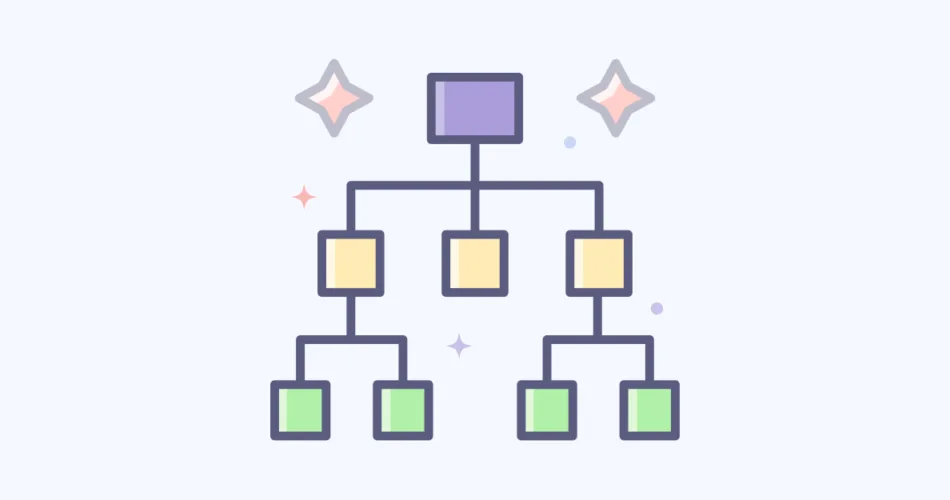Inheritance is a fundamental concept in object-oriented programming that allows classes to derive properties and behaviors from other classes. It enables the creation of a hierarchical relationship between classes, facilitating code reuse, extensibility, and a more organized software structure. In this comprehensive guide, we’ll delve into the world of inheritance in Java, exploring its mechanisms, benefits, and practical implementation.
The Essence of Inheritance
Inheritance allows a class, known as the subclass or derived class, to inherit attributes and methods from another class, referred to as the superclass or base class. This relationship forms an “is-a” association, where the subclass is a specialized version of the superclass. In Java, inheritance is achieved using the extends keyword.
Let’s illustrate this concept with an example:
public class Animal {
String species;
public Animal(String species) {
this.species = species;
}
public void makeSound() {
System.out.println("Animal makes a sound");
}
}
public class Dog extends Animal {
public Dog() {
super("Dog");
}
public void makeSound() {
System.out.println("Dog barks");
}
}
In this example, we have an Animal superclass with a species attribute and a makeSound() method. The Dog subclass extends Animal and inherits its attributes and methods. The Dog class also overrides the makeSound() method to provide a specialized implementation.
Single Inheritance:
Java supports single inheritance, which means a class can inherit from only one superclass. However, a superclass can have multiple subclasses. All classes in Java implicitly or explicitly inherit from the Object class, which is the root of the class hierarchy. The Object class provides fundamental methods such as toString() and equals().
For example:
public class Car {
// Car attributes and methods
}
public class ElectricCar extends Car {
// ElectricCar attributes and methods
}
public class Main {
public static void main(String[] args) {
ElectricCar electricCar = new ElectricCar();
System.out.println(electricCar.toString()); // Inherited from Object class
}
}
In this example, the ElectricCar class inherits from the Car class and indirectly from the Object class. Therefore, it inherits the toString() method, which is overridden in the ElectricCar class.
Multilevel Inheritance:
Multilevel inheritance happens when a class extends another class, which in turn extends another class. Here’s an example:
class Grandparent {
void grandparentMethod() {
System.out.println("Grandparent's method.");
}
}
class Parent extends Grandparent {
void parentMethod() {
System.out.println("Parent's method.");
}
}
class Child extends Parent {
void childMethod() {
System.out.println("Child's method.");
}
}
public class Main {
public static void main(String[] args) {
Child myChild = new Child();
myChild.grandparentMethod(); // Inherited from Grandparent
myChild.parentMethod(); // Inherited from Parent
myChild.childMethod();
}
}
Here, Child inherits from Parent, and Parent inherits from Grandparent.
Hierarchical Inheritance:
Hierarchical inheritance occurs when multiple classes inherit from a single superclass. For example:
class Vehicle {
void start() {
System.out.println("Vehicle started.");
}
}
class Car extends Vehicle {
void drive() {
System.out.println("Car is being driven.");
}
}
class Motorcycle extends Vehicle {
void ride() {
System.out.println("Motorcycle is being ridden.");
}
}
public class Main {
public static void main(String[] args) {
Car myCar = new Car();
Motorcycle myMotorcycle = new Motorcycle();
myCar.start(); // Inherited from Vehicle
myCar.drive();
myMotorcycle.start(); // Inherited from Vehicle
myMotorcycle.ride();
}
}
In this example, both Car and Motorcycle inherit from the Vehicle class.
Multiple Inheritance (through Interfaces):
Java supports multiple inheritance through interfaces. A class can implement multiple interfaces, allowing it to inherit method signatures from multiple sources. Here’s an example:
interface Swimming {
void swim();
}
interface Flying {
void fly();
}
class Bird implements Swimming, Flying {
public void swim() {
System.out.println("Bird is swimming.");
}
public void fly() {
System.out.println("Bird is flying.");
}
}
public class Main {
public static void main(String[] args) {
Bird myBird = new Bird();
myBird.swim();
myBird.fly();
}
}
In this case, the Bird class implements both the Swimming and Flying interfaces, inheriting methods from both.
5. Hybrid Inheritance:
Hybrid inheritance is a combination of any of the above types of inheritance. For example, a program might use single, multilevel, and hierarchical inheritance in various parts of its class hierarchy.
Using the super Keyword
The super keyword is used to refer to the superclass and its members from within a subclass. Developers frequently employ it to invoke the constructor of the superclass or methods that the subclass has overridden. This is useful for extending or enhancing existing functionality.
Consider the following example:
public class Vehicle {
protected String brand;
public Vehicle(String brand) {
this.brand = brand;
}
public void displayInfo() {
System.out.println("Brand: " + brand);
}
}
public class Car extends Vehicle {
private String model;
public Car(String brand, String model) {
super(brand);
this.model = model;
}
public void displayInfo() {
super.displayInfo(); // Call superclass method
System.out.println("Model: " + model);
}
}
In this example, the Car class extends Vehicle and uses the super keyword to call the constructor of the superclass. The displayInfo() method in the Car class also invokes the superclass method using super.displayInfo().
Benefits of Inheritance
Utilizing inheritance offers several advantages:
- Code Reusability: Multiple subclasses can reuse inherited attributes and methods, thereby reducing code duplication.
- Extensibility: Subclasses can incorporate new features without the need to modify the superclass, thus fostering a modular and flexible design.
- Consistency: The superclass centralizes shared behaviors and attributes, ensuring a consistent implementation across subclasses.
With careful planning and thoughtful design, inheritance enhances code structure and promotes efficient development practices.
Conclusion
Inheritance is a cornerstone of object-oriented programming in Java, enabling the creation of relationships between classes and the sharing of attributes and behaviors. By understanding the principles of inheritance and applying them effectively, developers can build well-structured, modular, and extensible software solutions. Inheritance empowers developers to write code that is not only efficient but also maintainable and scalable over time.
Thank you for embarking on this journey into the realm of inheritance in Java with us!
Subscribe to our email newsletter to get the latest posts delivered right to your email.


Comments